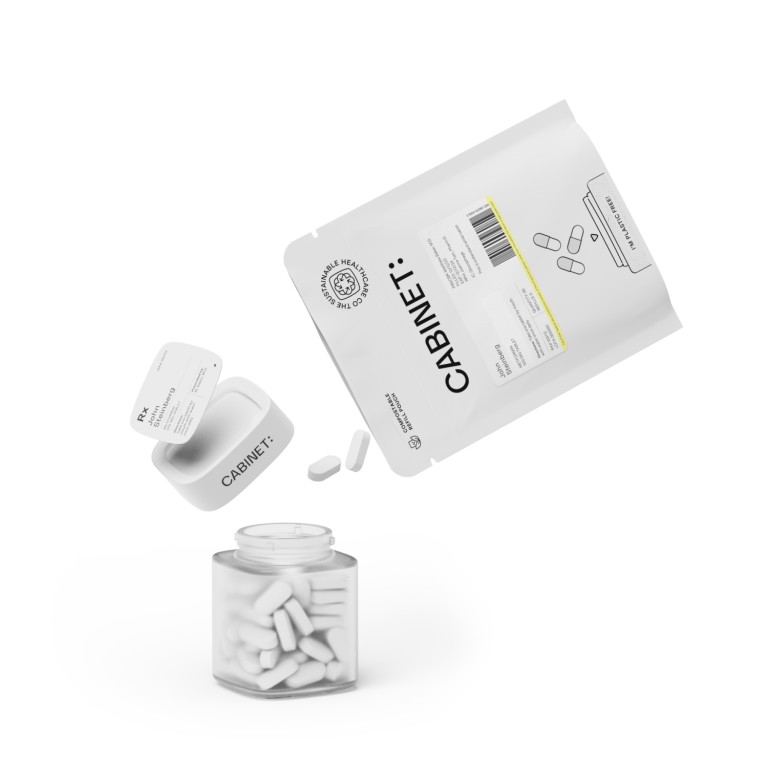Simvastatin is a widely prescribed medication that plays a crucial role in managing cholesterol levels. As a pharmacist, it is essential to understand the various aspects of this medication to provide accurate information and guidance to patients. In this comprehensive guide, we will delve into the key points regarding simvastatin, including its role in cholesterol management, indications for use, administration guidelines, potential side effects and interactions, and practical tips for patient counseling.
Understanding Simvastatin
The Role of Simvastatin in Cholesterol Management
Cholesterol is a type of fat that is essential for our body's functioning. However, high levels of cholesterol, particularly low-density lipoprotein (LDL) cholesterol, can lead to various cardiovascular conditions. Simvastatin, a member of the statin class of medications, is primarily used to lower LDL cholesterol levels and reduce the risk of heart disease.
Research has shown that simvastatin is effective in lowering LDL cholesterol by inhibiting an enzyme involved in cholesterol production. By reducing LDL cholesterol, simvastatin helps prevent the buildup of plaque in the arteries, ultimately reducing the risk of heart attacks and strokes.
The Pharmacology of Simvastatin
Simvastatin is a prodrug, which means it must undergo conversion in the liver to its active form. Once converted, it inhibits the activity of HMG-CoA reductase, an enzyme involved in cholesterol synthesis. By blocking this enzyme, simvastatin reduces the production of LDL cholesterol in the liver.
It is important to note that simvastatin should not be used by pregnant women or individuals with active liver disease. Moreover, caution should be exercised when prescribing simvastatin to patients taking certain medications, as drug interactions can occur.
Simvastatin is usually prescribed in tablet form and is taken orally once daily, typically in the evening. It is important for patients to follow their healthcare provider's instructions carefully when taking simvastatin to ensure optimal effectiveness.
Potential Side Effects of Simvastatin
While simvastatin is generally well-tolerated, some individuals may experience side effects. Common side effects of simvastatin include muscle pain, weakness, and gastrointestinal symptoms such as nausea or diarrhea. In rare cases, simvastatin may cause liver problems or a condition known as rhabdomyolysis, which is the breakdown of muscle fibers leading to kidney damage.
If you experience any unusual symptoms while taking simvastatin, it is important to contact your healthcare provider immediately. They can assess your symptoms and determine if any adjustments to your treatment plan are necessary.
Indications for Simvastatin Use
Treating Hypercholesterolemia with Simvastatin
Hypercholesterolemia, or high cholesterol levels, is a common condition that affects millions of individuals worldwide. Simvastatin, a member of the statin drug class, is widely used as a first-line treatment for hypercholesterolemia, particularly when lifestyle modifications alone are insufficient to achieve target cholesterol levels. By inhibiting the enzyme HMG-CoA reductase, simvastatin helps lower LDL cholesterol levels and reduce the risk of cardiovascular events.
The dosage of simvastatin depends on various factors such as the patient's age, cholesterol levels, and the presence of other medical conditions. It is crucial to individualize the treatment plan and closely monitor patients' response to therapy to ensure optimal outcomes. Regular monitoring of liver function tests is essential due to the potential risk of liver enzyme elevation associated with statin use.
Preventive Measures: Simvastatin and Cardiovascular Disease
In addition to treating hypercholesterolemia, simvastatin is also prescribed as a preventive measure for individuals at high risk of developing cardiovascular disease. Research has demonstrated that simvastatin can reduce the risk of major cardiovascular events, such as heart attacks and strokes, in patients with or without pre-existing cardiovascular conditions. Its anti-inflammatory and plaque-stabilizing effects contribute to its cardioprotective benefits.
As pharmacists, we play a vital role in educating patients about the importance of adhering to therapy and making necessary lifestyle changes to complement the benefits of simvastatin. Encouraging regular exercise, a heart-healthy diet rich in fruits, vegetables, and whole grains, and adherence to prescribed medications can significantly improve patient outcomes. Patient counseling also includes discussing potential side effects of simvastatin, such as muscle pain or weakness, and the importance of reporting any unusual symptoms promptly to their healthcare provider.
Administering Simvastatin
Recommended Dosage and Administration
The recommended starting dose of simvastatin is typically 10-20 mg per day, depending on the patient's needs. This initial dose can be adjusted based on the patient's response and goal cholesterol levels. In some cases, higher doses may be necessary to achieve optimal cholesterol reduction.
Simvastatin can be taken with or without food, as it does not significantly affect its absorption. However, it is essential to advise patients to take simvastatin consistently at the same time each day to maintain steady blood levels of the medication.
When initiating simvastatin therapy, healthcare providers should consider the patient's overall cardiovascular risk profile, including factors such as age, smoking status, blood pressure, and family history of cardiovascular disease. This comprehensive approach helps tailor the treatment to the individual patient, maximizing the benefits of simvastatin therapy.
Adjusting Simvastatin Doses
Regular monitoring of cholesterol levels is critical in evaluating the efficacy of simvastatin therapy. If the desired cholesterol levels are not achieved or maintained, dosage adjustments may be necessary. However, it is crucial to monitor liver function tests as well, as simvastatin can rarely cause liver abnormalities.
It is important for patients to understand that simvastatin is not a cure but rather a long-term management strategy for cholesterol control. Regular follow-ups with healthcare providers are essential to assess the overall effectiveness of the medication and make any necessary dosage adjustments.
In addition to cholesterol monitoring, healthcare providers should also assess other cardiovascular risk factors, such as blood glucose levels, blood pressure, and smoking status, to ensure comprehensive management of the patient's cardiovascular health. By addressing multiple risk factors simultaneously, healthcare providers can help reduce the overall risk of cardiovascular events in patients taking simvastatin.
Potential Side Effects and Interactions
Common and Rare Side Effects of Simvastatin
Like any medication, simvastatin can cause side effects. The most common side effects include muscle pain and weakness, headache, and gastrointestinal disturbances such as nausea and constipation. These side effects are usually mild and resolve on their own.
It is important to note that while most patients tolerate simvastatin well, there are rare but potentially serious side effects that can occur. These include muscle breakdown, known as rhabdomyolysis, which can lead to severe muscle pain, weakness, and in severe cases, kidney damage. Additionally, simvastatin has been associated with liver toxicity, although this is rare. Patients should be advised to seek medical attention if they experience unexplained muscle pain, weakness, or dark urine, as these could be signs of serious complications.
Although rare, simvastatin can potentially cause more serious side effects, such as muscle breakdown and liver toxicity. As pharmacists, we must educate patients to promptly report any unusual symptoms or changes in their health, as early detection and intervention can prevent severe complications.
Drug Interactions to Be Aware Of
Simvastatin can interact with other medications, potentially affecting their effectiveness or increasing the risk of side effects. For example, certain antibiotics, antifungals, and medications used for heart rhythm disorders can interact with simvastatin.
It is essential to thoroughly review a patient's complete medication profile to identify any potential drug interactions. When necessary, healthcare providers may adjust the dose of simvastatin or consider alternative medications to ensure patient safety and optimal therapeutic outcomes.
Patients should be advised to inform all healthcare providers about the medications they are taking, including over-the-counter drugs and supplements, to prevent harmful interactions. Pharmacists play a crucial role in educating patients about potential drug interactions and monitoring for any signs of adverse effects during therapy.
Patient Counseling Tips
Educating Patients About Simvastatin
As pharmacists, we have a unique opportunity to educate and empower patients to take an active role in their healthcare. When counseling patients about simvastatin, it is crucial to explain the importance of adhering to therapy, potential benefits, and possible side effects.
We can help patients understand the connection between cholesterol levels and heart health, emphasizing the role of simvastatin in reducing their risk of cardiovascular disease. Clear and concise communication can enable patients to make informed decisions about their treatment plan and actively participate in achieving their health goals.
Simvastatin, a widely prescribed medication, belongs to a class of drugs known as statins. These medications work by inhibiting an enzyme in the liver that plays a key role in cholesterol production. By reducing cholesterol levels, simvastatin helps to prevent the buildup of plaque in the arteries, which can lead to heart attacks and strokes.
It is important to counsel patients on the proper use of simvastatin, including the recommended dosage, timing, and any specific instructions provided by their healthcare provider. Patients should be aware that simvastatin is typically taken once daily, preferably in the evening, as cholesterol production is highest during the night. By following this dosing schedule, patients can maximize the effectiveness of the medication.
Addressing Patient Concerns and Misconceptions
Patient education involves not only providing information but also addressing any concerns or misconceptions they may have. Some patients may be hesitant to start simvastatin due to fears about side effects or dependence on medication.
It is our responsibility to address these concerns openly and transparently, emphasizing the benefits of simvastatin while acknowledging any potential risks. Patient-centered communication fosters trust, enabling patients to make well-informed decisions about their health and medication therapy.
One common concern among patients is the possibility of experiencing muscle pain or weakness while taking simvastatin. While this is a potential side effect, it is important to reassure patients that it is relatively rare and can often be managed by adjusting the dosage or switching to a different statin medication. By closely monitoring patients and promptly addressing any adverse effects, we can ensure their safety and well-being.
In addition to addressing concerns, it is important to dispel any misconceptions patients may have about simvastatin. Some individuals may believe that taking simvastatin will eliminate the need for lifestyle modifications such as a healthy diet and regular exercise. However, it is crucial to emphasize that medication alone is not sufficient to control cholesterol levels. Simvastatin should be used in conjunction with a heart-healthy lifestyle to achieve optimal results.
In conclusion, as pharmacists, we have a crucial role in guiding patients through their simvastatin therapy journey. By understanding the pharmacology, indications for use, administration guidelines, potential side effects and interactions, and effective patient counseling, we can optimize patient outcomes and contribute to their overall cardiovascular health.
If you're currently on simvastatin and looking to enhance your medication experience, consider transferring your prescription refill to Cabinet® Pharmacy. With Cabinet®, not only will your refills be managed for you, but you'll also receive a free personalized glass bottle that's child safe, shatter-tested, and refillable—perfect for decluttering your space. Plus, enjoy the convenience of stylish travel tins and eco-friendly refill pouches, all while receiving a complimentary bottle of premium Acetaminophen. Our dedicated pharmacists will ensure a rapid transfer from your current pharmacy, making the switch seamless. Ready to elevate your pharmacy experience? Look Up Your Prescription today and discover the Cabinet® difference. Signing up is quick and easy, and you'll love the perks of seamless home shipping and personalized care.









